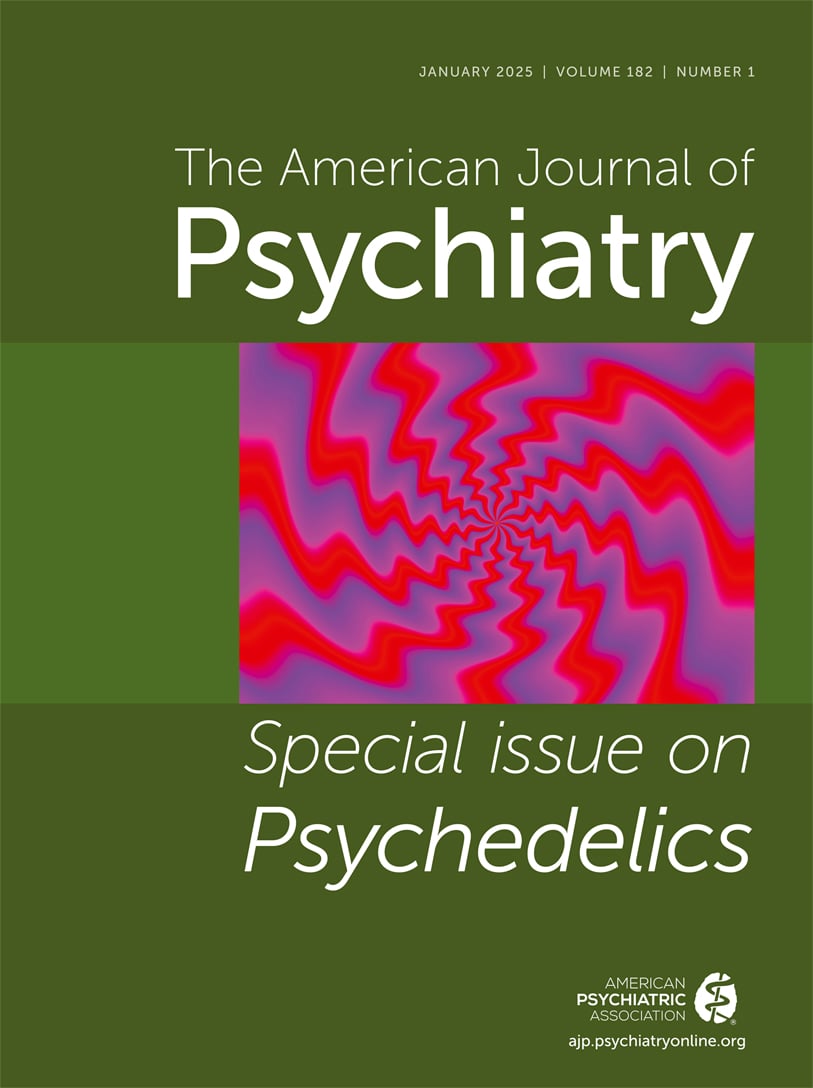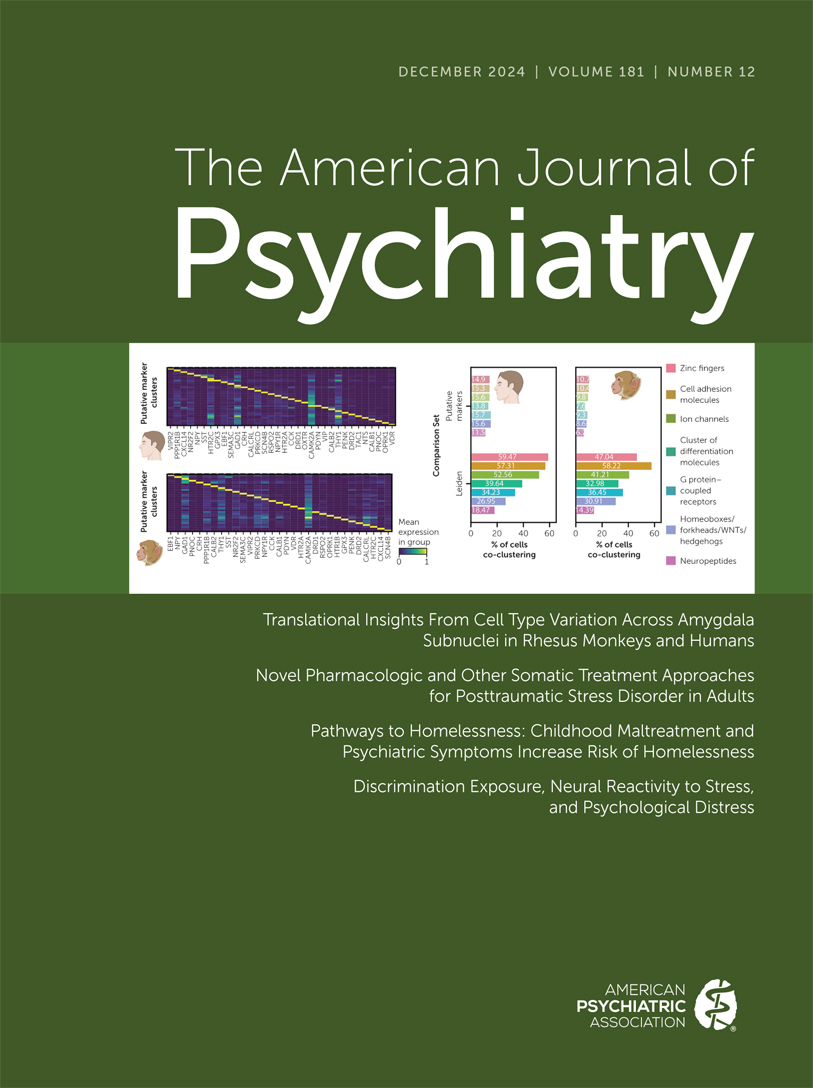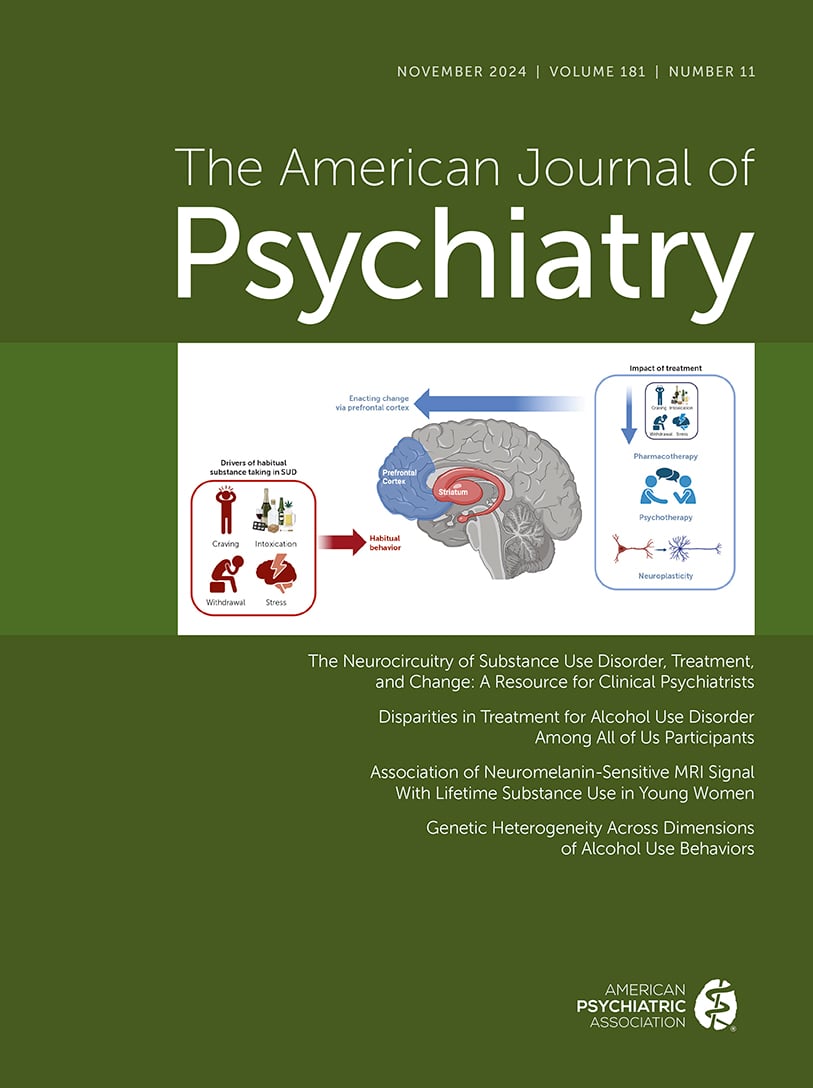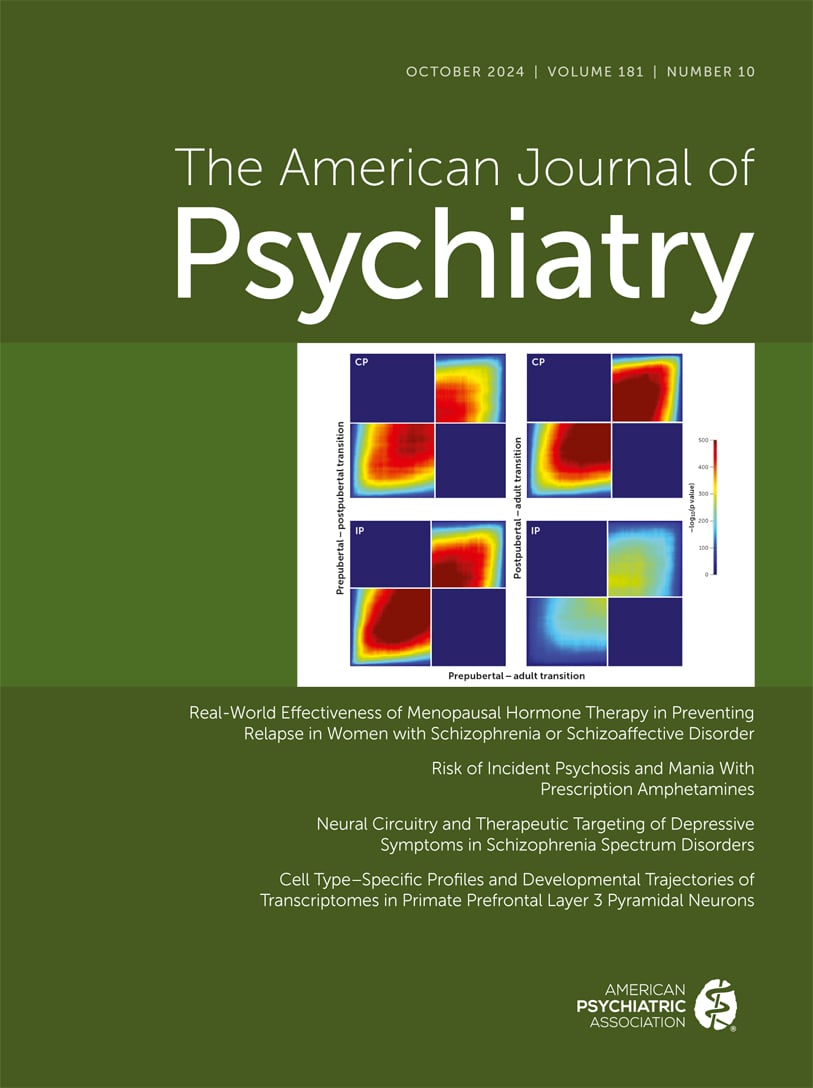American Journal of Psychiatry
- Volume 128
- Number 7
- January 1972
Article
Publication date: 01 January 1972
Pages799–805Normal volunteers were successfully hypnotized using a videotape induction technique. EEG measurements were made before trance induction, during induction, and during objective testing of the depth of hypnosis. Electronic analysis of EEG records revealed ...
https://doi.org/10.1176/ajp.128.7.799Publication date: 01 January 1972
Pages806–810The author, who has been the consulting psychiatrist on a cancer ward, outlines the fears and other problems faced by patients and staff on such a ward and describes his activities. He believes the psychiatrist in this setting can be most helpful by ...
https://doi.org/10.1176/ajp.128.7.806Publication date: 01 January 1972
Pages811–814Most people incorrectly believe that murder by strangers, with robbery as a motive, poses a most serious threat in the U.S. The evidence shows that murder ranks relatively low on the list of causes of violent death and that most victims are relatives or ...
https://doi.org/10.1176/ajp.128.7.811Publication date: 01 January 1972
Pages815–818The author describes three types of homicide: ego-syntonic, ego-dystonic, and psychotic. He points out that ego-dystonic, or dissociative, homicide is by far the most common and notes that it requires the presence of a number of factors: an ...
https://doi.org/10.1176/ajp.128.7.815Publication date: 01 January 1972
Pages819–823Videotape can markedly enhance supervision of the psychotherapist in training. It accurately records the session for later discussion and uniquely permits observation of the participants' nonverbal communication. However, the system is time-consuming and ...
https://doi.org/10.1176/ajp.128.7.819Publication date: 01 January 1972
Pages824–829Two studies investigated whether schizophrenic thought disorders persist past the most acute stage of disturbance. An object sorting test was administered to 91 acute patients at two time periods and also to 31 chronic schizophrenics. The results indicate ...
https://doi.org/10.1176/ajp.128.7.824Publication date: 01 January 1972
Pages830–835The authors describe the Prognostic Index, a clinical form for rating patients on 31 variables believed to be significant in predicting outcome of psychotherapy. Forty-seven patients were rated on this instrument at the beginning of therapy. Factor ...
https://doi.org/10.1176/ajp.128.7.830Publication date: 01 January 1972
Pages836–841The authors report the results of their questionnaire survey on drug use among high school students in southwestern Florida. They found that 24 percent of the students had used an illegal drug at least once, that certain types of drugs are used more often ...
https://doi.org/10.1176/ajp.128.7.836Publication date: 01 January 1972
Pages842–846The author advances the hypothesis that while drug abuse may be a symptom of psychological or social disturbances, when addiction supervenes it is no longer a symptom but a morbid condition of its own; its development will not be affected by removal of ...
https://doi.org/10.1176/ajp.128.7.842Publication date: 01 January 1972
Pages846–852The author describes the program and methods used in Reality House, a day care treatment center for the rehabilitation of narcotic addicts. Members of the program move up through five levels of treatment, which consists mainly of group psychotherapy and ...
https://doi.org/10.1176/ajp.128.7.846Publication date: 01 January 1972
Pages853–856The authors compared characteristics of 14 successful and 49 unsuccessful addict patients of the Narcotic Addict Rehabilitation Act treatment program. The most significant differences that they found were that successful patients were more likely to have ...
https://doi.org/10.1176/ajp.128.7.853Publication date: 01 January 1972
Pages856–860The author describes the origin, development, and impact of the nation's largest city-operated program for the treatment of heroin addiction. Patients in treatment showed decreased use of heroin, fewer arrests, and greater employment. Methadone ...
https://doi.org/10.1176/ajp.128.7.856Publication date: 01 January 1972
Pages861–865The authors studied 17 former narcotic addicts in order to determine what factors enabled them to successfully renounce drug use. Among their most important findings were that most of these ex-addicts had grown up in intact families, with fathers who ...
https://doi.org/10.1176/ajp.128.7.861Publication date: 01 January 1972
Pages865–868Two hundred six heroin users who appeared at the Walk-In Psychiatric Clinic at Massachusetts General Hospital during an 18-month period showed no evidence of improvement although various treatment modalities including psychotropic drugs, individual and ...
https://doi.org/10.1176/ajp.128.7.865Publication date: 01 January 1972
Pages868–872To document the long-term course of narcotic addicts, background and five-year follow-up data were obtained from records and interviews for 50 addicts who had first contact with a new treatment program in 1965. In mid-1970, 20 were either abstinent or ...
https://doi.org/10.1176/ajp.128.7.868Publication date: 01 January 1972
Pages877–881The author believes that most individuals who face imminent retirement are not prepared for it. This is due to factors such as forced early retirement and the individual's not being prepared to confront himself in a non working environment. He believes ...
https://doi.org/10.1176/ajp.128.7.877Publication date: 01 January 1972
Pages882–886The authors studied the relationship between the amount of therapist talk time during crisis session interviews and the relief of distress in 38 emergency room patients. They found that in the sessions judged as successful the therapists talked ...
https://doi.org/10.1176/ajp.128.7.882Publication date: 01 January 1972
Pages886–890The dissociation produced in the auditory modality by a challenge with LSD can be quantitated by an instrumental perception test. Chlorpromazine can protect against this dissociation, and its efficacy can be measured by changes in auditory perception. The ...
https://doi.org/10.1176/ajp.128.7.886Publication date: 01 January 1972
Pages890–893Under a grant of immunity from prosecution, the authors tested 100 student drug users and 100 nonusers, who also had immunity. They categorized the drug users as marijuana-only users, multiple-drug users, or gross-multiple-drug users. Using the Minnesota ...
https://doi.org/10.1176/ajp.128.7.890Publication date: 01 January 1972
Pages893–895The authors describe a schizophrenic woman who came to a psychiatric emergency room because of pain from needles in her arms. Her history suggested that she was experiencing somatic delusions as part of her chronic schizophrenic process. Radiological ...
https://doi.org/10.1176/ajp.128.7.893Publication date: 01 January 1972
Pages895–897A 45-year-old man developed a psychotic depression 11 days after the surgical replacement of both aortic and mitral valves with prostheses. He was effectively treated with ECT beginning 27 days after the surgery. This case further confirms the feasibility ...
https://doi.org/10.1176/ajp.128.7.895Past Issues
View Issues Archive
Vol. 182 | No. 1

Vol. 181 | No. 12

Vol. 181 | No. 11
